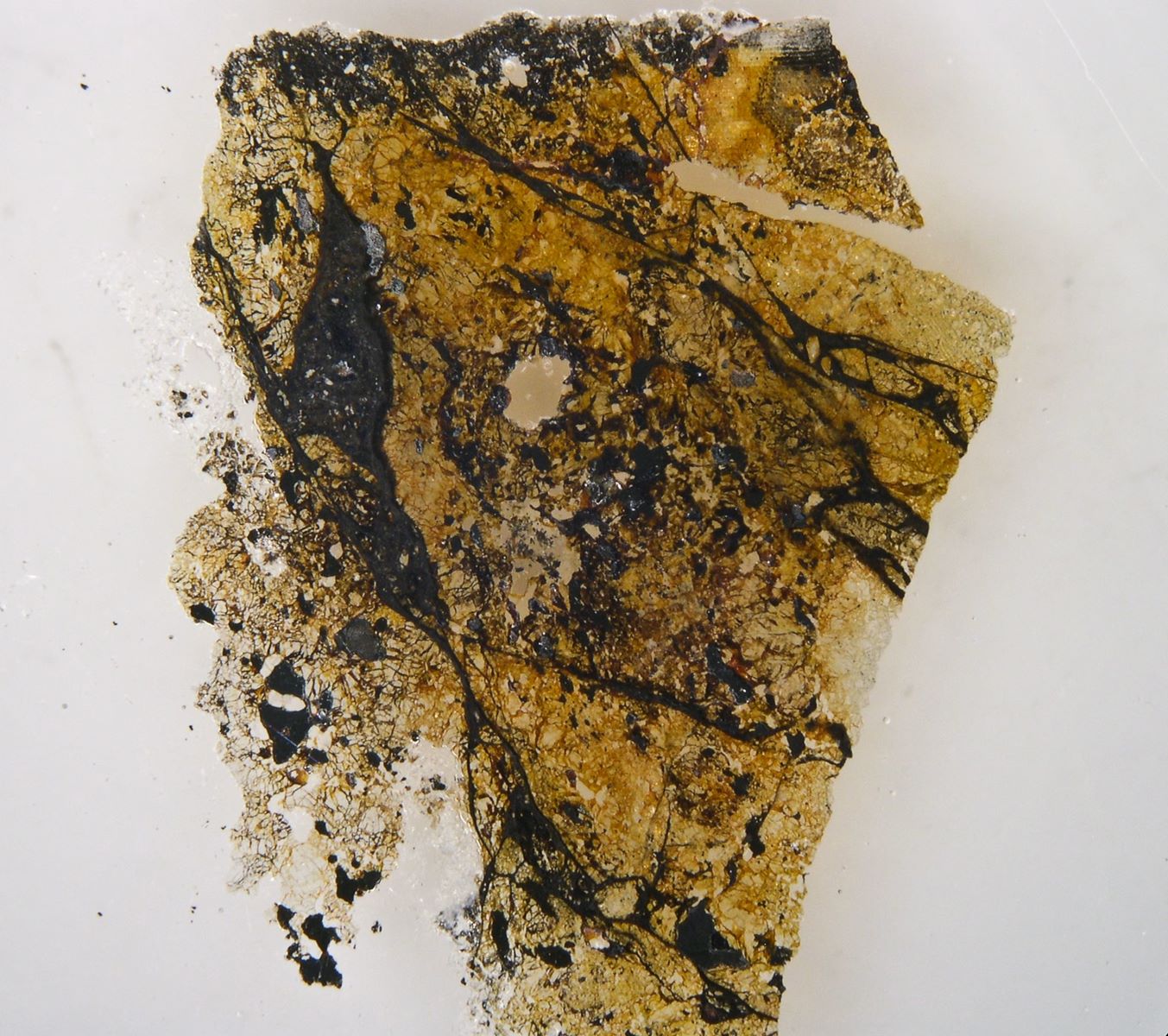
Bridgmanite is the most abundant mineral on Earth, yet it's hidden deep within the planet's mantle. Named after Percy Bridgman, a Nobel Prize-winning physicist, this mineral was first discovered in a meteorite. Bridgmanite is a high-density form of magnesium iron silicate and plays a crucial role in understanding Earth's interior. Its unique properties help scientists study seismic activities and the planet's thermal evolution. Despite its abundance, bridgmanite is rarely seen because it forms under extreme pressure and temperature conditions found only deep underground. Curious about this mysterious mineral? Here are 40 intriguing facts about bridgmanite that will expand your knowledge of Earth's hidden treasures.
Key Takeaways:
- Bridgmanite, the most abundant mineral on Earth, helps scientists understand the planet's interior and seismic activity. Its unique properties offer insights into planetary formation and technological advancements.
- Bridgmanite's stability under extreme conditions influences the Earth's mantle and seismic waves, providing clues about planetary differentiation and potential technological applications.
What is Bridgmanite?
Bridgmanite is a high-pressure mineral found deep within the Earth's mantle. Named after physicist Percy Bridgman, it plays a crucial role in understanding our planet's interior.
- Bridgmanite is the most abundant mineral on Earth, making up about 38% of the planet's volume.
- It was first discovered in a meteorite in 2014, although scientists had theorized its existence for decades.
- The mineral is a type of silicate perovskite, composed mainly of magnesium, iron, silicon, and oxygen.
- Bridgmanite forms under extreme pressures and temperatures, typically found at depths of 660 to 2,900 kilometers below the Earth's surface.
- It is named after Percy Bridgman, who won the Nobel Prize in Physics in 1946 for his work on high-pressure physics.
Importance of Bridgmanite
Understanding bridgmanite helps scientists learn more about the Earth's interior and its dynamic processes.
- Bridgmanite's structure allows it to remain stable under the intense conditions of the lower mantle.
- It plays a key role in the mantle's convection currents, which drive plate tectonics.
- The mineral's properties affect the way seismic waves travel through the Earth, providing clues about the planet's internal structure.
- Studying bridgmanite helps geologists understand the composition and behavior of the Earth's mantle.
- It also provides insights into the formation and evolution of other rocky planets and celestial bodies.
Physical Properties of Bridgmanite
Bridgmanite has unique physical properties that make it distinct from other minerals.
- It has a perovskite crystal structure, characterized by a cubic arrangement of atoms.
- The mineral is incredibly dense, with a density of about 4.3 grams per cubic centimeter.
- Bridgmanite is highly resistant to deformation, maintaining its structure under extreme pressures.
- It has a high melting point, estimated to be around 2,400 degrees Celsius.
- The mineral is typically opaque and ranges in color from dark brown to black.
Bridgmanite in Meteorites
Meteorites provide a rare opportunity to study bridgmanite in a natural setting.
- The first confirmed sample of bridgmanite was found in the Tenham meteorite, which fell in Australia in 1879.
- Meteorites containing bridgmanite are believed to have formed under high-pressure conditions similar to those in the Earth's mantle.
- Studying these meteorites helps scientists understand the processes that occur during planetary formation.
- Bridgmanite in meteorites can provide clues about the early solar system's conditions.
- The discovery of bridgmanite in meteorites supports the theory that similar minerals exist on other rocky planets.
Bridgmanite and Earth's Mantle
Bridgmanite is a key component of the Earth's mantle, influencing its properties and behavior.
- The lower mantle, where bridgmanite is most abundant, extends from 660 to 2,900 kilometers below the Earth's surface.
- Bridgmanite's presence in the mantle affects the way heat is transferred from the Earth's core to the surface.
- The mineral's high density contributes to the overall density of the mantle, affecting the planet's gravitational field.
- Bridgmanite's stability under high pressure helps maintain the structure of the lower mantle.
- The mineral's properties influence the viscosity of the mantle, affecting the movement of tectonic plates.
Bridgmanite and Seismic Activity
Bridgmanite plays a significant role in the study of seismic activity and earthquake dynamics.
- The mineral's properties affect the speed and direction of seismic waves as they travel through the Earth.
- Variations in bridgmanite's composition can create seismic discontinuities, which are changes in the speed of seismic waves.
- Studying these discontinuities helps scientists map the structure of the Earth's interior.
- Bridgmanite's behavior under pressure provides insights into the conditions that lead to earthquakes.
- The mineral's influence on seismic waves helps researchers understand the distribution of stress within the Earth's mantle.
Bridgmanite and Planetary Science
Bridgmanite's study extends beyond Earth, offering insights into other planets and celestial bodies.
- The mineral's presence in meteorites suggests that similar high-pressure minerals may exist on other rocky planets.
- Understanding bridgmanite helps scientists model the interiors of exoplanets, or planets outside our solar system.
- The mineral's properties provide clues about the formation and evolution of rocky planets.
- Bridgmanite's study contributes to our understanding of planetary differentiation, the process by which planets develop distinct layers.
- The mineral's behavior under extreme conditions offers insights into the dynamics of other celestial bodies, such as moons and asteroids.
Bridgmanite and Technological Applications
While primarily of scientific interest, bridgmanite's properties have potential technological applications.
- The mineral's high density and stability under pressure make it a candidate for use in high-pressure research.
- Bridgmanite's properties could inform the development of new materials for use in extreme environments.
- The study of bridgmanite contributes to advancements in geophysical and materials science research.
- Understanding the mineral's behavior under pressure helps improve models of Earth's interior, benefiting fields like seismology and geology.
- Bridgmanite's unique properties inspire the development of synthetic materials with similar characteristics for industrial applications.
Bridgmanite's Hidden Wonders
Bridgmanite, Earth's most abundant mineral, remains a mystery to many. Found deep within the mantle, it plays a crucial role in our planet's structure and dynamics. Despite its abundance, it's rarely seen due to its location far beneath the surface. Scientists only confirmed its existence in 2014, thanks to a meteorite. Bridgmanite's unique properties, like its ability to withstand extreme pressure and temperature, make it fascinating. It influences seismic activity and helps us understand Earth's formation. Bridgmanite's discovery has opened new avenues for research, shedding light on the planet's inner workings. Its study could lead to breakthroughs in geology and materials science. So next time you think about Earth's mysteries, remember Bridgmanite, the hidden giant shaping our world from the depths.
Frequently Asked Questions
Was this page helpful?
Our commitment to delivering trustworthy and engaging content is at the heart of what we do. Each fact on our site is contributed by real users like you, bringing a wealth of diverse insights and information. To ensure the highest standards of accuracy and reliability, our dedicated editors meticulously review each submission. This process guarantees that the facts we share are not only fascinating but also credible. Trust in our commitment to quality and authenticity as you explore and learn with us.


